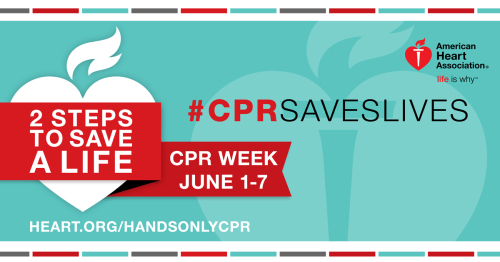National CPR and AED Awareness Week
Each year, June 1-7 is designated National CPR and AED Awareness Week. This is a collaborative effort between the American Red Cross, American Heart Association, and the National Safety Council. This is an important campaign for public safety, workplace safety, and personal safety and health.
MEMIC urges all employers to get involved by installing AED’s (automated external defibrillator) in common spaces, encouraging employees to learn how to perform CPR (Cardiopulmonary Resuscitation), and to get involved with local efforts to raise awareness of these life saving techniques and devices. Join us for a day of AED & CPR awareness on June 8.
Each year more than 350,000 people in the U.S. suffer out-of-hospital cardiac arrest. This disruption of the heart’s electrical system is a leading cause of death. Calling 911 for a person suffering cardiac arrest is the first step, but that alone will not likely save a life. Immediate intervention is needed to provide blood flow to the vital organs and every second counts. Providing CPR can temporarily circulate that much needed blood, while using an AED can restore the normal heart rhythm. Unfortunately, only about 46% of people who experience out-of-hospital cardiac arrest get the immediate help needed before emergency medical personnel arrive.
CPR was first developed for medical professionals in the early 1960s. The first mass citizen training occurred in the Seattle area in the early 1970s. The 1980s saw emergency dispatchers beginning to provide CPR instructions by telephone while emergency personnel responded to calls for help. Early public access defibrillators were developed in the 1990s; these have now become the modern day AEDs. Much has occurred over the last 58 years or so, but the fundamental principle remains: early intervention is critical to saving lives.
CPR courses are available from many entities including fire departments, ambulance services, hospitals, organizations such as the American Heart Association, National Safety Council, American Red Cross, and by many other consultants and health care professionals. The basic techniques are easy to learn and remember. Over the years the methodology has changed. CPR is no longer complicated or intimidating. It is a simple technique that could very well save the life of another human being. It might even be someone you love.
With improved technology and lower costs, AEDs have become ubiquitous in our society. They are now available for around $1,000 and found in many airports, shopping malls, and schools. Does your business have one? Do you know where it is located? Do you know how to use it? The equipment is simple to use, it even talks you through every step. But someone has to take the initiative, find the AED, and use it to save someone’s life. The AED won’t help anyone if it isn’t used!
We hope you will join us in a day of CPR & AED awareness and education for your coworkers. It only takes a minute to watch a Hands-Only CPR video at www.handsonlycpr.org. Click here for more info on AEDs and check out these resources from the American Heart Association, American Red Cross, and the National Safety Council.


